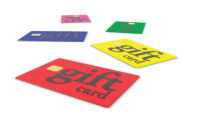
Gift cards are recognized as the top award in the incentive industry, according to surveys and studies. Recipients are empowered with the right to choose the item that most motivates himself or herself. According to Ceridian, a leading global human resources and benefits consultant, eight out of ten employees prefer gift cards over other incentives. In studies conducted by Incentive magazine, gift cards even rival cash as the most asked for incentive award.
This article is not intended to convince safety professionals to implement safety recognition or award systems. From all the surveys and discussions I’ve been a part of, there are as many opinions on safety incentives systems as there are safety professionals. Some folks hate them, some love them, some are in between, but all have their opinions and everyone is an expert on the subject. This is a forum to give you some facts and information on why gift cards make effective safety awards.
Leading versus lagging indicators
Safety award systems can work well and produce significant results, but only when designed and implemented properly. Unfortunately, many aren’t, and the awards that are used may be part of the problem. When safety incentive programs aren’t done properly, some conclude that “safety incentives” in general don’t work. Having reviewed hundreds of programs, I can honestly say that the ones that don’t perform well are either poorly designed, poorly implemented or both. The award you choose and how you use it can impact the performance of your employees and the results of the program.Most safety professionals agree that safety award systems should be based on leading rather than lagging indicators. Traditional programs were almost always based on lagging indicators, issuing awards after reducing incidents of injuries or accidents. These programs were often implemented on a team basis, where the entire team could lose awards because of accidents reported by a few. This resulted in peer pressure, leading to the non-reporting of injuries or accidents.
Emphasis on the individual
Non-traditional or leading indicator programs are based on changed behavior and offer individual employee awards linked to active involvement in safety-related activities — safe work practices — and engagement in the process of prevention. The emphasis is on individual performance and recognition, with less attention given to the size of the award. Gift cards are ideal because they come in all denominations, with the most used being $25 and $50. They are easy to administer and can be awarded instantly. Even better, you can find several online gift card suppliers who sell vouchers/ cards that are redeemable for a choice of hundreds of popular gift cards. With these systems, your employees get to choose.If your budget is limited, gift cards provide great value. You may think that a cap or tee shirt with your program logo on it is a good award, but if you give employees a choice between the tee shirt and the gift card, you may be surprised at what they choose. In test after test of programs we’ve implemented, gift cards were chosen more than 90 percent of the time. Think of logo items as communication devices to keep your program top of mind, not as awards. Use safety awards to change negative behaviors or reinforce positive behaviors.
What research shows:
- By consistently and continuously reinforcing behavior change with small amounts of awards, you will change behavior
- A small, positive, immediate consequence has more impact on behavior than a large, future and uncertain one.
Search for gift card suppliers to help you with the awards for your programs, or, as many have done, do it yourself. Gift cards are the top incentive award because they are what your employees want. That’s half the battle in any incentive program.

